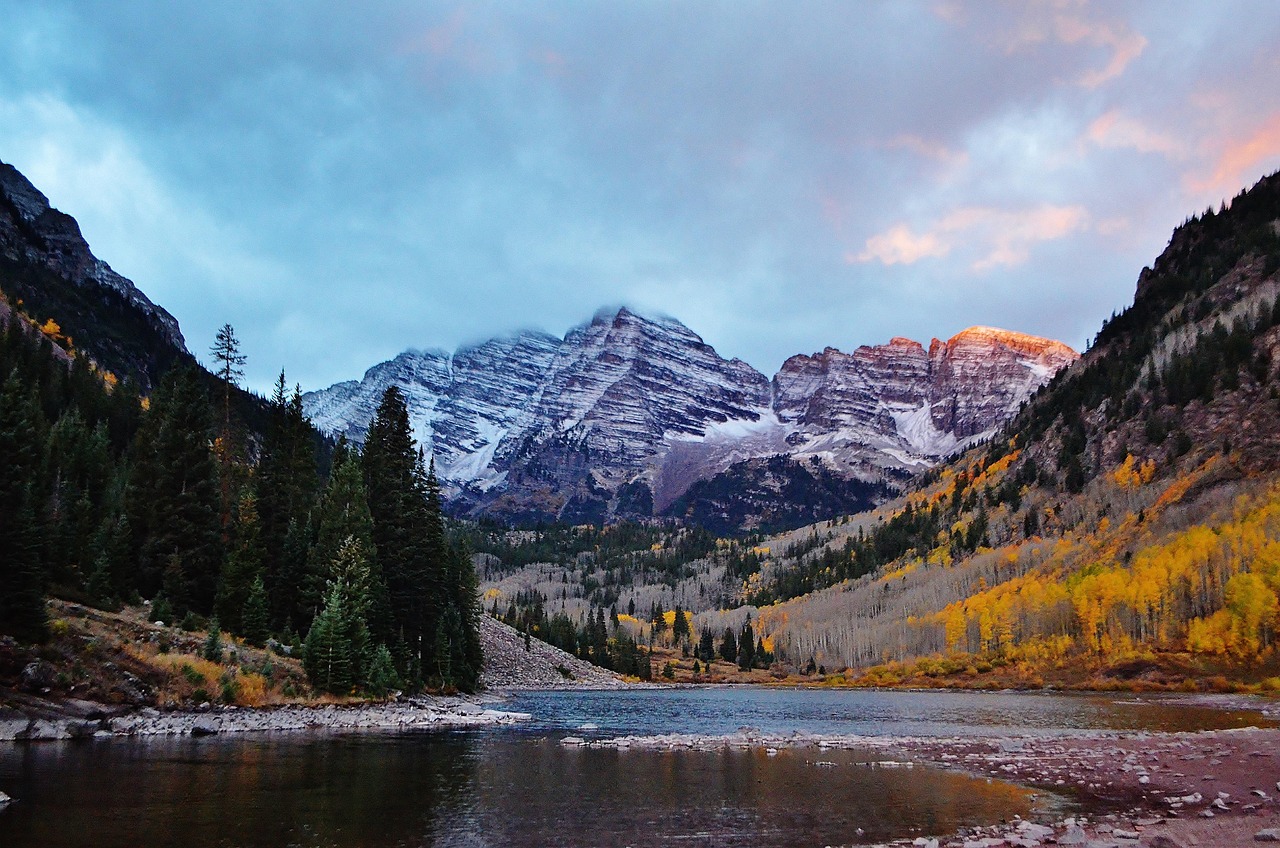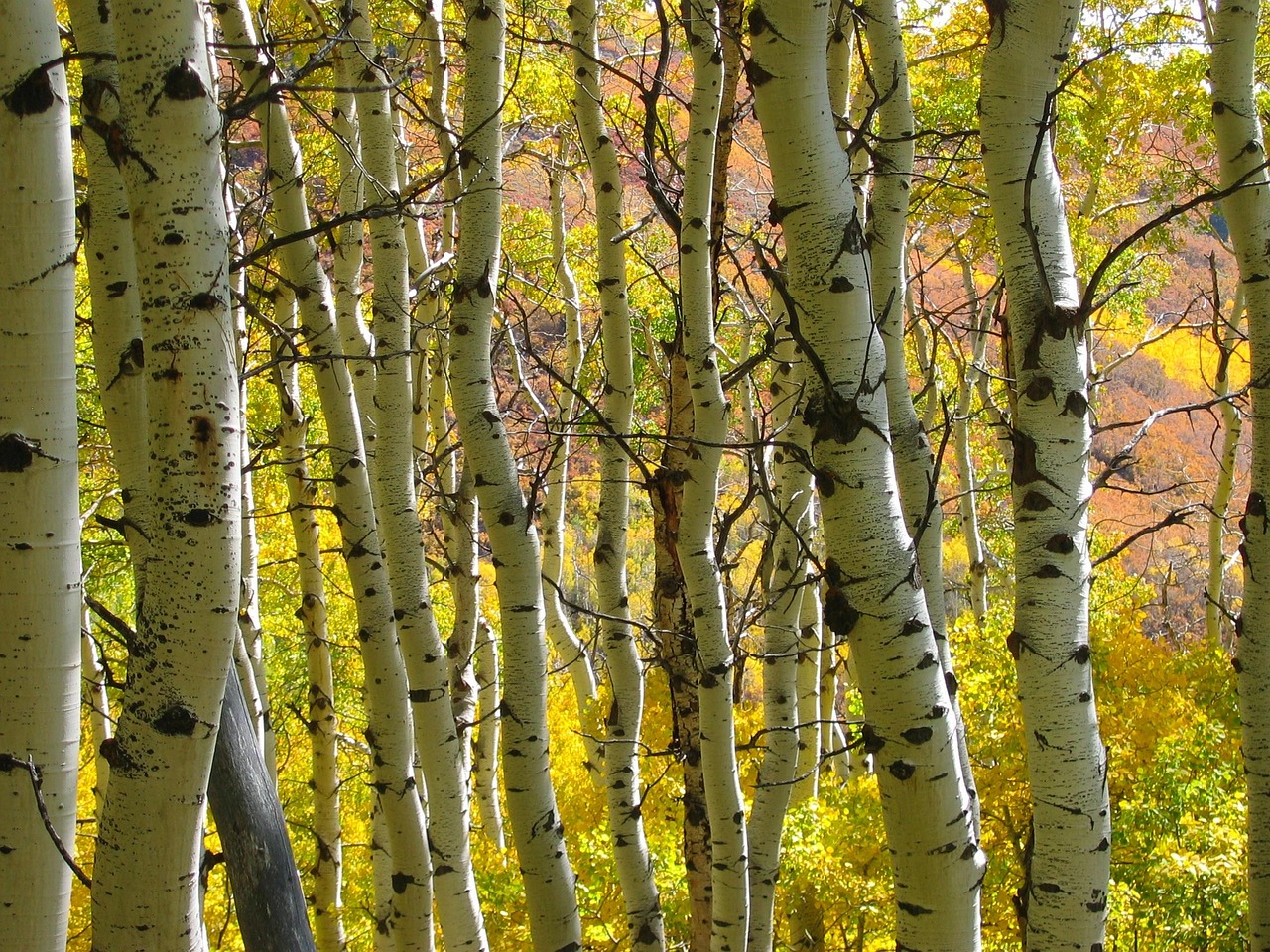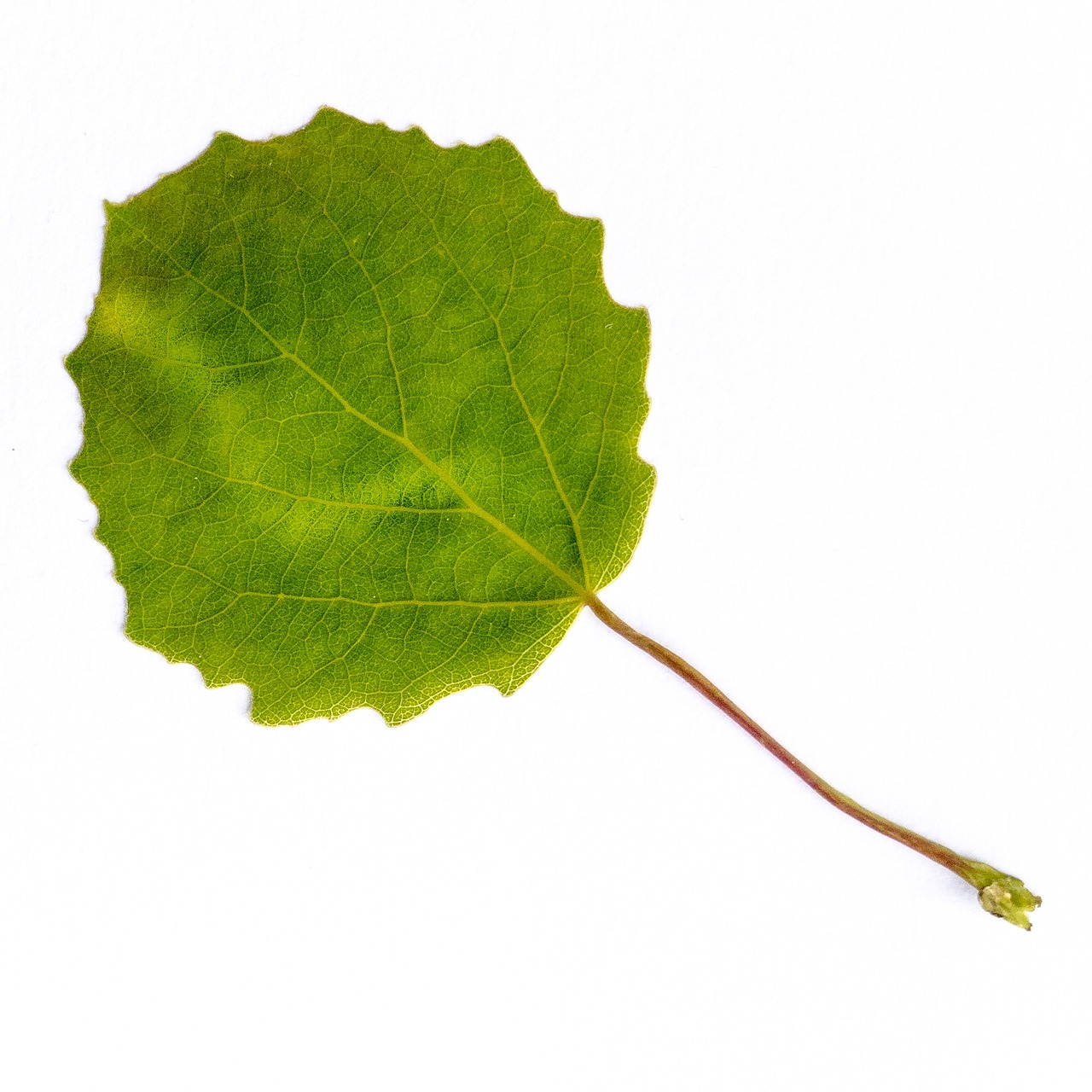Quaking aspens provide moderate shade coverage. Their flat crowns and light foliage allow some sunlight to filter through, making them suitable for dappled shade rather than dense coverage.
Understanding Quaking Aspens

Quaking aspens, scientifically known as Populus tremuloides, are a popular choice for landscaping in many regions of North America. These trees are recognized for their striking white bark and fluttering leaves, which create a beautiful visual effect, especially in the wind. They are commonly found in clusters, forming extensive groves that can change the landscape dramatically.
One of the most appealing aspects of quaking aspens is their adaptability. They thrive in a variety of soil types and are particularly well-suited for cooler climates. This resilience makes them an excellent choice for homeowners looking to enhance their yards or gardens. However, it raises the question of how effective they are in providing shade.
Shade Characteristics of Quaking Aspens
The shade provided by quaking aspens can be described as light and dappled. The trees have a relatively narrow crown compared to other shade trees like oaks or maples. This means that while they can reduce sunlight, the coverage is not as dense. The leaves of the aspen flutter in the breeze, creating a shimmering effect that can be quite pleasant.
Quaking aspens grow quickly and can reach heights of 30 to 50 feet. Their growth rate is one of the reasons they are favored in various landscaping projects. However, their rapid growth also leads to a shorter lifespan, usually around 30 to 50 years. This lifespan affects their long-term viability as shade providers.
Factors Influencing Shade Coverage
Several factors determine how much shade quaking aspens provide:
- Tree Size: Larger trees will generally provide more shade than smaller ones.
- Density of Planting: Trees planted closer together may create more shade than those spaced widely apart.
- Soil Quality: Healthy soil promotes better growth and larger canopies.
- Climate: Trees in cooler climates may grow differently than those in warmer regions.
To illustrate the growth patterns and shade potential of quaking aspens compared to other common shade trees, consider the following table:
| Tree Type | Average Height (ft) | Shade Density | Lifespan (years) |
|---|---|---|---|
| Quaking Aspen | 30-50 | Light/Dappled | 30-50 |
| Maple | 40-100 | Dense | 60-100 |
| Oak | 60-100 | Dense | 100-300 |
This table highlights the differences in height, shade density, and lifespan among various tree types. While quaking aspens are visually appealing and provide some shade, they may not be the best option for those seeking substantial coverage over larger areas.
Benefits of Planting Quaking Aspens
Despite their moderate shade coverage, quaking aspens offer numerous benefits that make them a valuable addition to many landscapes. These trees not only enhance the aesthetic appeal of outdoor spaces but also contribute positively to the environment.
Environmental Contributions
Quaking aspens play an essential role in the ecosystem. Here are some key environmental benefits:
- Air Quality Improvement: Like all trees, quaking aspens absorb carbon dioxide and release oxygen, improving air quality.
- Wildlife Habitat: These trees provide habitat and food for various wildlife species, including birds, insects, and small mammals.
- Erosion Control: The extensive root system of quaking aspens helps prevent soil erosion, particularly in hilly or sloped areas.
- Water Management: They aid in water retention and reduce runoff, which can help maintain local water supplies.
Aesthetic Appeal
In addition to their environmental contributions, quaking aspens are known for their striking appearance. The white bark and vibrant green leaves create a stunning contrast against the sky and surrounding foliage. As seasons change, these trees offer a dynamic visual display:
- Spring: Fresh green leaves emerge, signaling new growth.
- Summer: The leaves flutter in the wind, providing a shimmering effect.
- Fall: Leaves turn brilliant shades of yellow, creating a stunning autumn landscape.
- Winter: The stark white bark stands out against the snow, adding beauty even in the coldest months.
Cultivation and Care of Quaking Aspens
Growing quaking aspens can be rewarding, provided that proper care is taken. Understanding their requirements ensures healthy growth and longevity.
Ideal Growing Conditions
Quaking aspens thrive in specific conditions that should be considered when planting:
- Sunlight: These trees prefer full sun, requiring at least six hours of direct sunlight each day.
- Soil Type: Well-draining soil is essential. They can tolerate various soil types but prefer sandy or loamy soils.
- Water: Regular watering is crucial during the initial growth period. Once established, they are relatively drought-tolerant.
Pest and Disease Management
Quaking aspens are generally hardy but can be susceptible to certain pests and diseases. Awareness of these issues can help maintain tree health:
- Aspen Leaf Miner: This pest can cause significant damage by mining through leaves. Regular inspections can help catch infestations early.
- Powdery Mildew: This fungal disease appears as a white powder on leaves. Ensuring proper air circulation can reduce its occurrence.
- Canker Diseases: These can affect the bark and wood of the tree. Keeping the tree healthy through proper care is the best prevention.
Spacing and Planting Strategies
When planning to plant quaking aspens, spacing is an essential consideration. These trees tend to spread out and can grow in clusters, so it’s important to allow adequate space for growth:
- Spacing: Ideally, plant quaking aspens at least 10 to 15 feet apart to allow for their full canopy development.
- Cluster Planting: Planting in groups can create a more natural look and enhance shade coverage in specific areas.
- Companion Planting: Consider planting with other native species that thrive in similar conditions for a balanced ecosystem.
By understanding the benefits, care requirements, and planting strategies for quaking aspens, homeowners can effectively incorporate these trees into their landscapes.
Potential Issues with Quaking Aspens


While quaking aspens are often celebrated for their beauty and adaptability, they can present certain challenges for homeowners and landowners. Being aware of these potential issues can help in making informed decisions about planting and maintaining these trees.
Root System Concerns
Quaking aspens have a unique root system that can lead to both positive and negative outcomes:
- Suckering: These trees often produce numerous suckers, which are young shoots arising from the roots. While this can create a lovely grove effect, it may also lead to overcrowding if not managed properly.
- Invasive Growth: The extensive root system can spread aggressively, potentially invading neighboring gardens or lawns. Regular pruning may be necessary to control their spread.
- Soil Competition: Quaking aspens may compete for nutrients and water with nearby plants, which can affect the health of those plants.
Climate Limitations
Although quaking aspens are hardy in many environments, they thrive best under specific climatic conditions:
- Cold Climates: Quaking aspens prefer cooler temperatures and may struggle in consistently hot or humid areas.
- Drought Sensitivity: While established trees are somewhat drought-tolerant, prolonged dry spells can stress them. Young trees require regular watering during dry periods.
- Wind Exposure: These trees have shallow root systems, making them vulnerable to wind damage. Planting them in sheltered locations can help mitigate this risk.
Quaking Aspens in Landscaping Design
Incorporating quaking aspens into landscaping can enhance the overall design, but careful planning is essential. Their unique characteristics lend themselves to various landscaping styles.
Design Elements
When integrating quaking aspens into your landscape, consider the following design elements:
- Focal Points: Use quaking aspens as focal points in your garden. Their striking appearance can draw attention and create visual interest.
- Natural Screens: Due to their height and growth habit, they can serve as natural screens or privacy barriers between properties.
- Transition Areas: Quaking aspens work well in transitional areas where different landscape elements meet, such as between a wooded area and an open lawn.
Seasonal Interest
Quaking aspens provide year-round interest in the landscape:
- Spring: Fresh green foliage emerges, providing a bright contrast against the still-bare branches of other trees.
- Summer: The fluttering leaves create movement and dappled light, enhancing outdoor spaces.
- Fall: The spectacular golden-yellow foliage in autumn creates a breathtaking display that attracts attention.
- Winter: Their stark white bark stands out beautifully against a snowy backdrop, adding to the winter landscape.
Caring for Quaking Aspens in Your Landscape
Caring for quaking aspens involves regular maintenance practices to keep them healthy and visually appealing. Here are some essential care tips:
Watering Practices
Proper watering is crucial, especially during the early stages of growth:
- Young Trees: Water new plantings deeply once a week during dry spells. This encourages strong root development.
- Established Trees: Once established, quaking aspens generally need less frequent watering but should be monitored during prolonged dry periods.
Pruning Techniques
Regular pruning can enhance tree health and appearance:
- Timing: Prune in late winter or early spring before new growth begins.
- Removal of Dead or Damaged Wood: Regularly inspect for dead or damaged branches and remove them to prevent disease.
- Sucker Control: Manage suckers by cutting them back to maintain desired tree form and prevent overcrowding.
Caring for quaking aspens requires consideration of their specific needs and characteristics. By understanding their growth habits and maintenance requirements, homeowners can successfully incorporate these beautiful trees into their landscapes.
Additional Considerations for Quaking Aspens
When considering quaking aspens for your landscape, there are several additional factors to take into account that can further inform your decision. These trees have specific traits and requirements that may impact their integration into various outdoor settings.
Longevity and Sustainability
Quaking aspens typically have a shorter lifespan compared to other tree species. Here are some points to consider regarding their longevity and sustainability:
- Growth Rate: Quaking aspens grow quickly, reaching maturity in a relatively short time. This rapid growth can be advantageous for those seeking quick shade.
- Short Lifespan: With a lifespan of 30 to 50 years, planning for replacement is essential. Homeowners should consider whether they are willing to replant periodically.
- Sustainability Practices: Utilizing sustainable planting and care practices can enhance the longevity of these trees. Implementing proper watering, mulching, and pest management can help them thrive longer.
Impact on Surrounding Plants
Quaking aspens can influence the surrounding environment, which is an essential consideration for landscaping:
- Nutrient Competition: Their extensive root system can compete with nearby plants for nutrients and water, potentially affecting their growth.
- Shade Influence: Because quaking aspens provide light shade, consider how this might affect the growth of sun-loving plants nearby.
- Wildlife Interaction: The presence of quaking aspens can attract various wildlife, providing benefits as well as challenges. Making sure that local fauna does not adversely affect newly planted areas is important.
Exploring Alternatives for Shade Coverage

If the shade coverage from quaking aspens does not meet your needs, there are several alternative tree species to consider. Each has its own unique characteristics and shade qualities:
- Red Maple (Acer rubrum): Known for its dense foliage, red maples provide excellent shade and vibrant fall colors.
- American Oak (Quercus rubra): This tree offers a broad canopy and strong shade, making it a popular choice for larger spaces.
- Linden (Tilia americana): Lindens are known for their fragrant flowers and broad leaves, offering substantial shade coverage.
- Honeylocust (<em:Gleditsia triacanthos): With a lighter canopy, honeylocusts provide dappled shade and are tolerant of urban conditions.
Final Thoughts
Quaking aspens can be a beautiful and dynamic addition to any landscape. Their unique aesthetic appeal, coupled with environmental benefits, makes them an attractive choice for many homeowners. However, understanding their limitations in shade coverage is crucial when considering them for your yard or garden. They offer light and dappled shade rather than dense coverage, which may not be suitable for all preferences or needs.
Their quick growth rate and attractive appearance can enhance outdoor spaces significantly. Still, potential issues such as root spread, climate sensitivity, and maintenance requirements should be considered carefully. By weighing these factors against your landscape goals, you can make informed decisions about incorporating quaking aspens or exploring alternative shade trees that may better suit your needs.
Ultimately, whether you choose quaking aspens or another tree species, thoughtful planning and care will ensure a flourishing landscape that enhances both beauty and function in your outdoor environment.
